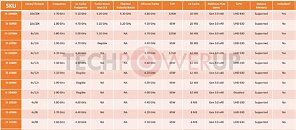- Joined
- Oct 9, 2007
- Messages
- 47,853 (7.38/day)
- Location
- Dublin, Ireland
| System Name | RBMK-1000 |
|---|---|
| Processor | AMD Ryzen 7 5700G |
| Motherboard | Gigabyte B550 AORUS Elite V2 |
| Cooling | DeepCool Gammax L240 V2 |
| Memory | 2x 16GB DDR4-3200 |
| Video Card(s) | Galax RTX 4070 Ti EX |
| Storage | Samsung 990 1TB |
| Display(s) | BenQ 1440p 60 Hz 27-inch |
| Case | Corsair Carbide 100R |
| Audio Device(s) | ASUS SupremeFX S1220A |
| Power Supply | Cooler Master MWE Gold 650W |
| Mouse | ASUS ROG Strix Impact |
| Keyboard | Gamdias Hermes E2 |
| Software | Windows 11 Pro |
Ahead of a possible reveal in the sidelines of CES, followed by an early-Q2 2020 product-launch, company slides detailing Intel's 10th generation Core desktop processors in the LGA1200 package, codenamed "Comet Lake-S," leaked to the web courtesy Informatica Cero. They confirm that HyperThreading will play a key role, with Intel enabling it across the lineup. The range-topping Core i9 series will be 10-core/20-thread along with 20 MB of L3 cache. The Core i7 series will be 8-core/16-thread, along with 16 MB L3 cache. The all-important Core i5 series will be 6-core/12-thread, equipped with 12 MB of L3 cache. The Core i3 series will have two sub-tiers: i3-103xx series with 4-core/8-thread and 8 MB L3 cache; and i3-101xx series 4-core/8-thread with 6 MB L3 cache.
The Core i7 and Core i9 "Comet Lake" chips will feature native support for dual-channel DDR4-2933, while the Core i5 and Core i3 will make do with native DDR4-2667 support (memory overclocking possible). Besides core/thread counts, and cache size increases, Intel will dial up clock speeds across the board by as much as 300 MHz per SKU (vs. their 9th gen predecessor), and introduce Turbo Boost Max 3.0, which has been exclusive to its HEDT processors. The introduction of Turbo Boost Max 3.0 could also bring about modern favored-core capability (benefiting Windows 10 1909 and later). The classic Turbo Boost is also available. There's also a mysterious new feature called "Thermal Velocity Boost," with its own set of clock-speeds depending on core/thread load. The chips could also feature Modern Standby C10 power-state support (first to the desktop platform). Intel is said to have also added several new core and memory overclocking features on the K-SKUs.

Built on a 14 nm-class silicon fabrication node, and featuring the same IPC as "Skylake," the 10th generation Core "Comet Lake" series will rely on aggressive power-management to sustain 65 W TDP rating for most SKUs, but Intel's virtual barrier for 95 W as the TDP number for unlocked K SKUs ends with the 10 generation (the i9-9900KS already breaks that). The 10th generation Core K SKUs have a scorching 125 W TDP rating not just for the 10-core i9-10900K and 8-core i7-10700K, but also the 6-core i5-10600K. The table above details the various SKUs we could make out from the low image-quality slide screenshots.


View at TechPowerUp Main Site
The Core i7 and Core i9 "Comet Lake" chips will feature native support for dual-channel DDR4-2933, while the Core i5 and Core i3 will make do with native DDR4-2667 support (memory overclocking possible). Besides core/thread counts, and cache size increases, Intel will dial up clock speeds across the board by as much as 300 MHz per SKU (vs. their 9th gen predecessor), and introduce Turbo Boost Max 3.0, which has been exclusive to its HEDT processors. The introduction of Turbo Boost Max 3.0 could also bring about modern favored-core capability (benefiting Windows 10 1909 and later). The classic Turbo Boost is also available. There's also a mysterious new feature called "Thermal Velocity Boost," with its own set of clock-speeds depending on core/thread load. The chips could also feature Modern Standby C10 power-state support (first to the desktop platform). Intel is said to have also added several new core and memory overclocking features on the K-SKUs.

Built on a 14 nm-class silicon fabrication node, and featuring the same IPC as "Skylake," the 10th generation Core "Comet Lake" series will rely on aggressive power-management to sustain 65 W TDP rating for most SKUs, but Intel's virtual barrier for 95 W as the TDP number for unlocked K SKUs ends with the 10 generation (the i9-9900KS already breaks that). The 10th generation Core K SKUs have a scorching 125 W TDP rating not just for the 10-core i9-10900K and 8-core i7-10700K, but also the 6-core i5-10600K. The table above details the various SKUs we could make out from the low image-quality slide screenshots.


View at TechPowerUp Main Site







